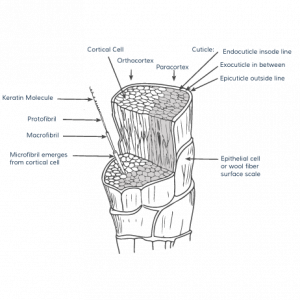Let’s start with understanding formaldehyde. What is it?
Formaldehyde is a colorless, strong-smelling gas used in making building materials and many household products. It is used in pressed-wood products, such as particleboard, plywood, and fiberboard; glues and adhesives; permanent-press fabrics; paper product coatings; and certain insulation materials. It is also used to make other chemicals.
When dissolved in water it is called formalin, which is commonly used as an industrial disinfectant, and as a preservative in funeral homes and medical labs. It can also be used as a preservative in some foods and in products, such as antiseptics, medicines, and cosmetics. Sometimes, although formaldehyde is not used, substances that release formaldehyde are. These have been found in cosmetics, soaps, shampoos, lotions and sunscreens, and cleaning products.
Formaldehyde can be added as a preservative to food, but it can also be produced as a result of cooking and smoking.
Here is what expert agencies say on the back of several epidemiological studies
The National Toxicology Program (NTP) is formed from parts of several different US government agencies, including the National Institutes of Health (NIH), the Centers for Disease Control and Prevention (CDC), and the Food and Drug Administration (FDA). The NTP lists formaldehyde as “known to be a human carcinogen.”
The International Agency for Research on Cancer (IARC) is part of the World Health Organization (WHO). Its major goal is to identify the causes of cancer. IARC has concluded that formaldehyde is “carcinogenic to humans” based on higher risks of nasopharyngeal cancer and leukemia.
The Environmental Protection Agency (EPA) maintains the Integrated Risk Information System (IRIS), an electronic database that contains information on human health effects from exposure to various substances in the environment. The EPA has classified formaldehyde as a “probable human carcinogen.”
National Cancer Institute researchers have concluded that, based on data from studies in people and from lab research, exposure to formaldehyde may cause leukemia, particularly myeloid leukemia, in humans.
Source: American Cancer Society
More common health problems?
When present in the air at levels >0.1 parts per million (ppm), some people may have health effects, such as:
- watery eyes
- burning sensations of the eyes, nose, and throat
- coughing
- wheezing
- nausea
- skin irritation
- increased potential for asthma
With a better understanding of formaldehyde, one can understand how this dangerous chemical has become pervasive in our lives. It is very difficult to completely remove it from our existence.
What if we could get some help from natural materials that also provide an inherent service in our occupied spaces?

In 2014 a UT Austin graduate student Jennifer Wang undertook a comprehensive study with the sole purpose of understanding how best to clean the air of formaldehyde. (The basis was the highly publicized problems created by FEMA with the temporary housing provided for Hurricane Katrina victims). She also speaks to elevated levels in schools.
We’ll attach Jennifer’s work below in its entirety and otherwise paraphrase herein.
Wool fibers are primarily keratins or fibrous structural proteins. These keratins are some 97% of wool by mass and they contain an abundance of amino acids. There are seven in particular that are highly reactive with formaldehyde. This bond takes on two forms: chemisorption and physisorption.
Jennifer explains it clearly in her thesis: “The side chains of each amino acid….bind with formaldehyde to form a methylene bridge cross-link product in a stable and irreversible chemical reaction called chemisorption, which ensures that formaldehyde can never be reemitted.”
(the physisorption piece pertains to a bit of formaldehyde that is physically deposited on the wool. It can be up to 30% and may be reemitted but only with an excessive change in relative humidity levels, temperature, and mass concentration gradients of wool)
In short, wool is the most effective medium Jennifer was able to find for cleaning the air of formaldehyde. The natural characteristics of wool enable it to absorb this harmful chemical, therefore, improving your indoor air quality.
Given how prevalent formaldehyde is in our living spaces, this attribute of wool is clearly worth considering when making an insulation decision. Jennifer’s full research report is available HERE.
We enjoy the science of what we do; that includes actual chemistry through to building science. The natural world has given us a wildly dynamic, highly effective fiber in coarse wool. It is our job at Havelock to help you understand and appreciate its capabilities should you make a decision to use it.
There is more where this came from and we’ll keep sharing.

Jim – Thanks and your are right! We will remember next time. Keep healthy.
Darren – All our pricing is here…. https://havelockwool.com/buy/.
Thanks!
Todd – Our wool is fire resistant and Class A rated for flame spread and fire hazard per test ASTM E84. Wool naturally resists mold. See our site for loads of details on all this. Thanks for the interest!